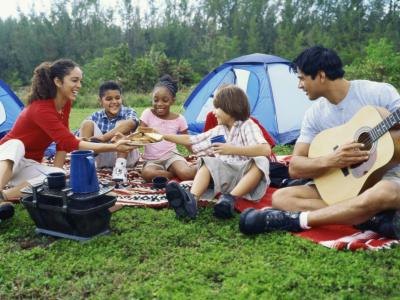Learning The Secrets About Tents
Posted by: headm on: March 26, 2016
 Choosing The Best Possible Tent For You The internet will provide you with a lot of good reviews for different kinds of tents. But on this short blog, we’ll provide some specifics to help you with your decision making. We’ll talk about things to consider before purchasing a tent that caught your eye. The Tent’s Sleeping Capacity When picking your tent, you have to first pick one based on the size of your group, or whether or not it’s necessary for you to have extra space for pets, gear, or more people. However, you must keep in mind that there’s no set industry standard which would define tent dimensions per person. So when assessing the capacity of the tent, here’s a general tip: expect a close fit. And if you want more room, it’s better to upsize your tent’s capacity by 1 more person, especially if you and your group is typically:
Choosing The Best Possible Tent For You The internet will provide you with a lot of good reviews for different kinds of tents. But on this short blog, we’ll provide some specifics to help you with your decision making. We’ll talk about things to consider before purchasing a tent that caught your eye. The Tent’s Sleeping Capacity When picking your tent, you have to first pick one based on the size of your group, or whether or not it’s necessary for you to have extra space for pets, gear, or more people. However, you must keep in mind that there’s no set industry standard which would define tent dimensions per person. So when assessing the capacity of the tent, here’s a general tip: expect a close fit. And if you want more room, it’s better to upsize your tent’s capacity by 1 more person, especially if you and your group is typically:
How to Achieve Maximum Success with Camping
huge claustrophobic
On Equipment: My Experience Explained
taking with them a small child or a pet Can It Be Used In One Or More Seasons? Tents For Spring, Summer, and Fall The three-season tents are the most famous among customers. They are lightweight and can withstand relatively temperate climates of fall, summer, and spring. Most of them are equipped with enough mesh panels boosting the tents air flow. Mesh panels are best for keeping insects out of the tent, but they aren’t advisable if you are going to a place with blowing powdery sand. Three-season tents can be reliable even when it’s pouring but it’s not crafted to sustain exposure to heavy snow, violent winds, and harsh storms. Tents For (Almost) All Seasons Extended-season or 3+ season tents are crafted to withstand prolonged usage – it’s perfect for summer, but is also usable during early spring, and late fall when there’s only moderate snow. They aim to provide a perfect balance of warm-retention, strength and ventilation. Tents for Four Seasons Also known as mountaineering tents, four-season tents are able to hang tough in harsh environments such as snow, light storm, and fierce winds. These tents are specially tested to brave the inhospitable weather experienced during winter and above tree line. These tents have rounded dome structure so as not to accumulate snow, they have sturdier poles and heavier fabrics, and they don’t have a lot of mesh panels which can hinder ventilation so it’s not the best for mild to warm climate. What Key Tent Features To Check Peak Of The Tent And The Dimension Of Tent Floor Consider your tent’s height, especially if you’re tall and wants to change clothes standing up. And if you’re taller than 6 feet, you must have a floor length of 90 inches, not the usual 84-88 inches. Tent Doors Before buying a tent, think about whether or not you’ll need more than one door, consider their shape, noise, and orientation too. Materials Used For The Tent And Its Structure Consider the tent’s pole structure, tent materials, garage or vestibules, rainfly, guy out loops, interior loops and pockets, as well as ventilation – make sure they all suit your needs. It would also be nice to have additional accessories such as battery-powered ventilation fan, broom and dustpan, utility cord, floor mat, seam sealer, and tent repair kit.
Leave a Reply